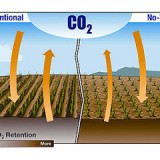 |
| Varian ICP-MS from Wikipedia |
Dear readers,
Excuses for a technical post here, but we need your scientific expertise. If you have experience in soil laboratory testing techniques, or know someone who does, please send us an email at [email protected] or leave a comment. We’re attempting to reconcile slightly different lead results from three different labs and I’d like to be able to write about soil testing methods. Two of the labs we sent samples off to (UMass and Timberleaf Soil Testing) use inductively coupled plasma mass spectrometry (ICP) to test for lead. Wallace labs uses an extractant, AB-DTPA (ammonium bicarbonate Diethylene Triamine Pentaacetic acid).
Here’s how Wallace described their lead testing techinique,
We use AB-DTPA (ammonium bicarbonate Diethylene Triamine Pentaacetic acid).
It is a gentle extractant and it mimics roots in extracting minerals from the soil. Most often environmental tests are made with boiling acids which are more aggressive than roots. The AB-DTPA method is a standard testing method of the Soil Science Society of America. It is called the universal extractant. It measures the bioavailable or plant available minerals which is expected to be adsorbed by plants. Most of the background heavy metals are occluded and are unavailable to plants. Our testing does not see the occluded metals.
Total lead is approximately 10 times higher than our AB-DTPA measured lead. We recommend that AB-DTPA lead be less than 30 parts per million for home production of edible produce.
UMass says,
We use a modified Morgan solution (dilute glacial acetic acid and ammonium hydroxide) to measure extractable lead (using ICP). Total Estimated Lead is calculated using a correlation established during a study performed here at UMass that compared total digestion levels to extractable levels using 300-400 soils.
I divided one soil sample into three parts and sent a portion to three labs. While all three labs indicated the presence of above natural levels of lead, there were enough differences between the tests to warrant a closer look at the techniques. Your assistance would be greatly appreciated and we’ll share what we find out.





Erik,
I am not a expert in soil testing or lead testing. But one thing that seems to be missing from the description of the AB-DTPA method is information on how they arrived at the 30ppm cutoff for edible produce? It seems to me that is critical info to have for this test as well as the other two tests looking at total lead. Does that cutoff level imply that lead levels increase in the plant material when soil levels are above this value? This seems like something that could be empirically determined in a lab.
I called the CDC about two years ago because I had purchased two items for my eight-year-old granddaughter. Both were recalled because of excessive lead. Neither had been used because I called my daughter and told her the problem. My complaint was about more testing of products from China. The man said that I could get my grandchild tested. Children are the new lead tests, or so I told him. He wholeheartedly agreed.
Did you send these to the so-called “farm colleges?” I would think they would have good methods.
If you are using a soil test that tries to mimic the way a plant takes up lead, why not just test the plant matter? The plants are what you and your livestock will be eating anyway.
Plants don’t absorb lead from soils. Testing is a waste if that’s your concern.
I’m assuming the ICP sample was higher. There’s a lot of atomic lead that could be in the soil but completely unavailable for uptake – A lot depends on the soil chemistry, types of plants, and (if my painful semester of soil chemistry serves me correctly) especially pH of the soil. There’s a lot of elements that can be within the structure of secondary soil minerals (particularly clays) and be completely unavailable for uptake by plants. Isomorphic Substitution is the keyword there if you want to do your own research into it (I can’t seem to find my soil chem textbook at the moment…). I don’t know enough about the methods for extracting particular elements to give a substantial critique on extractions versus ICP, but the one thing to keep in mind with ICP is that it uses plasma (HOT! Think “surface of the sun” temperatures) to completely nuke a sample into its elemental components and will basically tell you everything that’s in a sample. That’s important if you’re in the habit of eating soil. However, plant uptake does not take place equally on every atom in the soil – The element needs to be mobile within the soil *and* the plant needs to have the capability to actually uptake it. That’s where the AB-DTPA test may give you more usable numbers.
Disclaimer – I am a soil scientist, but not a heavy metals expert. I know that *some* plants will absorb lead from the soil and accumulate it in their tissue, but it depends on the soil conditions and the plant. Not all parts of plants that *do* absorb lead will actually contain lead – Plants are good about partitioning less-than-useful elements into certain parts of their tissue. A lot of times these uptake processes are passive rather than active and are dependent on factors like pH.
Get in touch with me if you’d like some scholarly references, etc. [email protected]
I don’t have any technical expertise to offer. I was inspired by your experiences to seek lead testing for the soil around my fixer-upper house in South Texas, because the house is about 90 years old and before I had the siding replaced, we had two hailstorms (baseball-sized hail) that stripped the paint off the house. Since the paint was really old, I imagine that it contained lead. I called the soil testing lab at Texas A&M University, and found out that they don’t do lead testing. I was referred to the Department of Geology, and they will do the testing for me at $65 per sample.
I dont have any experience with lead, but a fair bit with soils.
I would assume all labs would use ICP-MS, the difference is the extractant used(DTPA extracts are usually analysed by ICP-MS). ICP-MS can only be used on liquid samples, therefore you have to use some sort of extractant. If you want to know the total amount of lead in a sample you first have to dissolve the whole soil in some strong acids. but that is not really any more informative than the “gentle” extracts because a lot of it will be in unavailable forms (as mentioned earlier).
What is important is the interpretation. I would suggest DTPA is the most useful because it is the standard and probably has more supporting work to help interpretation of the result, but uptake will be dependent on soil conditions and plant species etc.
Just wanted to thank you all for your help! I’m still analyzing the three tests and will do a blog post sometime in the new year. Again MANY THANKS! Got to say that we have the most awesome blog readers in the universe!